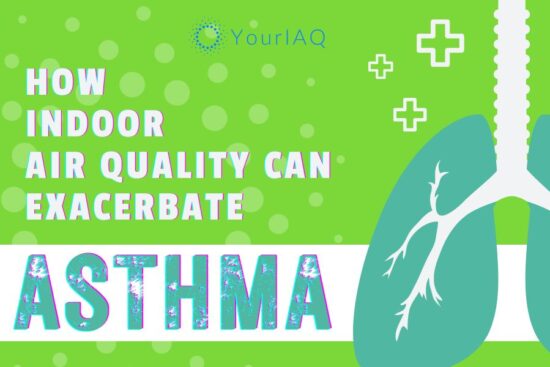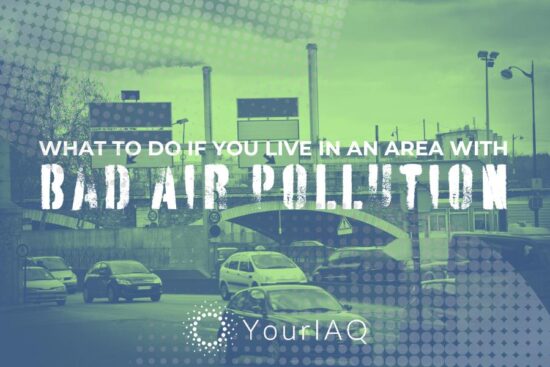
If you’ve ever wondered about the quality of the air you breathe—both indoors and outdoors—you’re in the right place. In this blog post, we’’ll dive deep into the EPA’s Criteria Air Pollutants and break down what they are, how they affect our health, and what measures are in place to regulate them. Grab your favorite cup of tea and let’s get started.
What Are the EPA’s Criteria Air Pollutants?
The Environmental Protection Agency (EPA) identifies a set of common air pollutants, known as the “Criteria Air Pollutants.” These pollutants are found all over the U.S. and are known to harm your health and the environment. The list includes:
- Carbon Monoxide (CO)
- Lead
- Nitrogen Dioxide (NO2)
- Ozone
- Particulate Matter (PM)
- Sulfur Dioxide (SO2)
The Sources and Health Effects of Each Criteria Air Pollutant
Carbon Monoxide (CO):
- Sources: Vehicle emissions, burning of fossil fuels.
- Health Effects: Impedes blood’s ability to carry oxygen, leading to heart issues and affecting the nervous system.
Lead:
- Sources: Old paint, industrial processes.
- Health Effects: Developmental, cognitive deficits in children; cardiovascular problems in adults.
Nitrogen Dioxide (NO2):
- Sources: Car engines, power plants.
- Health Effects: Respiratory problems, aggravated asthma symptoms.
Ozone:
- Sources: Chemical reactions between oxides of nitrogen (NOx) and volatile organic compounds (VOC), usually from industrial processes and chemical plants.
- Health Effects: Chest pain, coughing, throat irritation, and airway inflammation.
Particulate Matter (PM):
- Sources: Construction sites, unpaved roads, smokestacks.
- Health Effects: Heart attacks, aggravated asthma, decreased lung function.
Sulfur Dioxide (SO2):
- Sources: Burning of coal and oil, industrial processes.
- Health Effects: Respiratory problems, exacerbation of asthma.
How the EPA Regulates Criteria Air Pollutants
Thanks to the Clean Air Act, the EPA regulates the amount of these pollutants in our atmosphere. The EPA sets and reviews Air Quality Standards for each pollutant, ensuring that the levels stay below what’s considered harmful for human health. States are responsible for creating and implementing plans to maintain or improve air quality to meet these standards.
Ways to Reduce Personal Exposure
While government regulations play a big role, individual actions matter to reduce your exposure to criteria air pollutants. Here’s what you can do to protect yourself and your loved ones:
- Monitor air quality forecasts.
- Monitor your indoor air quality with smart devices like IAQ by Sensables
- Limit outdoor activities on high-pollution days.
- Use air purifiers indoors.
- Ensure proper ventilation in homes and workplaces.
- Use public transportation, carpool, or walk/bike when possible.
How to Stay Informed About Air Quality
By being more aware and making informed choices, we can contribute to cleaner air for everyone. For further understanding and to stay updated, consider these helpful third-party resources:
- AirNow: The outlet the federal government uses to provide real-time air quality data.
- American Lung Association: Offers insights on the health impacts of poor air quality.
- EPA’s Air Quality Index (AQI): A tool to help you understand daily air quality.
FAQs
What are the 6 Criteria Air Pollutants?
They are Ground-level ozone, Particulate matter, Carbon monoxide, Lead, Sulfur dioxide, and Nitrogen dioxide.
What are the main sources of indoor air pollutants?
Cars, industrial processes, power plants, and even some natural sources release these pollutants. In addition to external sources, many indoor factors can contribute to indoor air quality, including household chemicals, gases, lack of ventilation, and biological pollutants from pets, pollen, or other organic sources.
Why are the EPA’s Criteria Air Pollutants important to monitor?
They have known health and environmental impacts, according to federal government research.
How often does the EPA review its Air Quality Standards?
Typically, every five years, ensuring they align with the latest scientific data.
Where can I find more about my city’s air quality?
The EPA’s AirNow website provides real-time air quality information.
Read more:






